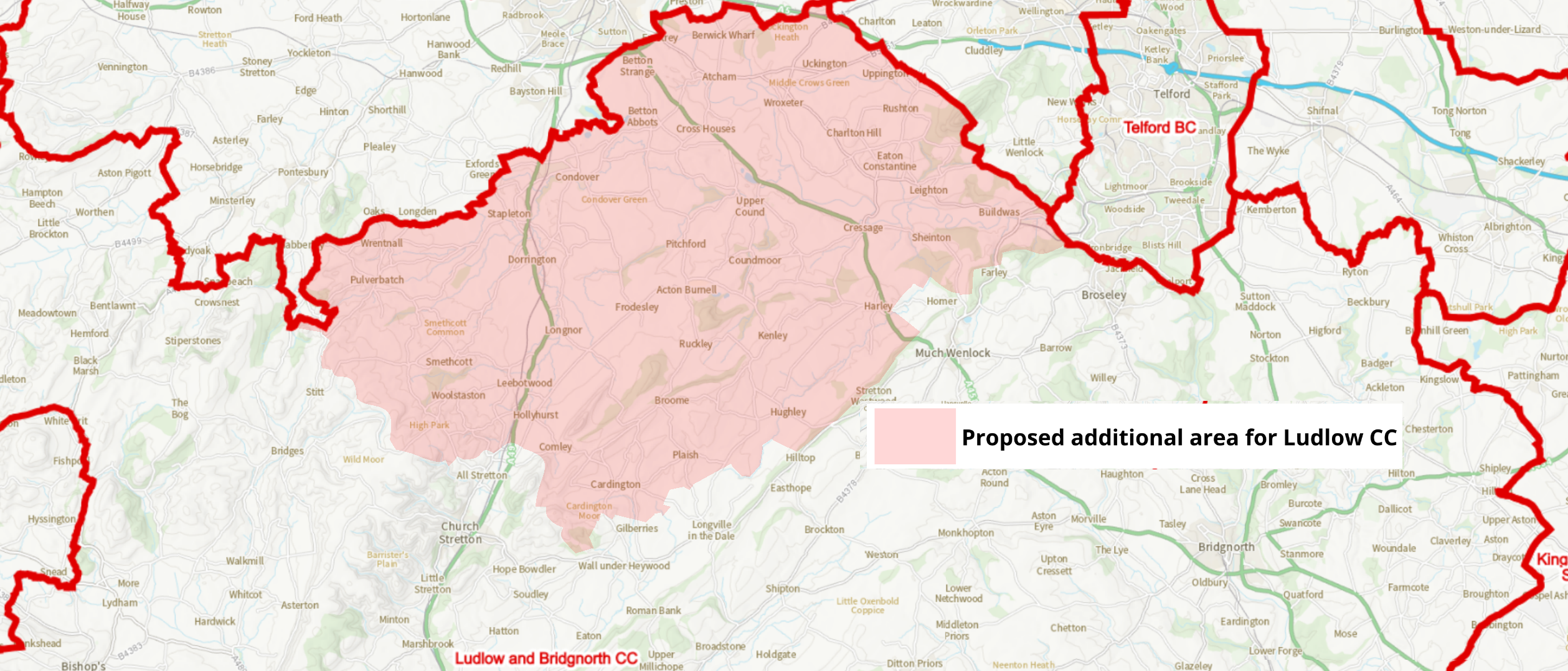It has been a long journey and for many areas of the country it may not be over yet. The Boundary Commission for England has made its latest “final” proposals for changing the boundaries of parliamentary constituencies, including those in Shropshire. Although the government had long abandoned plans to reduce the number of MPs from 650 to 600, it is pressing up to even up the size of constituencies.
The Ludlow constituency, for now represented by Philip Dunne, is proposed to expand north to the edge of Shrewsbury taking in Dorrington and Cressage and adopting a new name of Ludlow and Bridgnorth. Shrewsbury and Atcham will lose Atcham and become plain Shrewsbury. Hinstock and Hodnet will be transferred out of North Shropshire into an expanded constituency, which could be called Newport and Wellington.
These changes make sense to me.
Discussion and consultations on new constituency boundaries has been going on for more than decade. In 2011 legislation was passed to reduce the number of MPs from 650 to 600 with the aim of saving £12.2 million a year. But that proposal fell in 2012, when David Cameron blocked reform of the House of Lords and the constituency changes were blocked in a tit for tat move. In some ways, the aims of Lords reform and constituency boundary reform were similar. A reduction in seats and an attempt to make them more representative. A reform of the Lords is long overdue as is the current constituency boundary review.
The process of constituency reform has not been an easy one. The proposals put forward in 2018 aimed to a Ludlow and Leominster constituency. It was a bad proposal that found little local favour.
By law, every constituency must now contain between 69,724 and 77,062 parliamentary electors. That is a very narrow range and making electoral boundaries fit to the number of electors has proved difficult.
The proposals for a Ludlow and Bridgnorth constituency would increase the electorate from 65,787 to 77,034 (+17%). That is a lot of new people. It does not greatly change the political demographics. However, there has been a growth in the Lib Dem votes in local elections across the constituency and Labour has at last gained a Shropshire Councillor for Bridgnorth. The assumption that the current Ludlow constituency and its replacement will be forever Tory is likely to be challenged at the next general election.
Shrewsbury and Atcham, which could become Shrewsbury, would see a barely perceptible increase from 75,139 to 75,528 electors. Daniel Kawczynski is reported to “very concerned” about the changes and Conservative councillors are also complaining that villages close to Shrewsbury will be moved into Ludlow and Bridgnorth, including Atcham. I can see why they are concerned. The current political demographics suggest that proportion of votes for Lib Dems and Labour in Shrewsbury will increase at the expense of the Conservatives.
The North Shropshire constituency reduces from 77,768 to 77,052 – a change that will result in the villages in the council divisions of Hodnet and Cheswardine south of Market Drayton being moved into a new Newport and Wellington constituency. This will replace the Wrekin constituency though there is already opposition to the change of name.
I welcome the proposed change in the constituency name from Ludlow to Ludlow and Bridgnorth. The towns are equal in size and both towns should be acknowledged in the constituency name. I would also make the case that there is an equally good argument for the constituency being named Bridgnorth and Ludlow instead of Ludlow and Bridgnorth. Philip Dunne seems sanguine about the changes to the constituency boundary but is worried about the name change. He will be “seeking the views of my constituents, particularly on the proposed change of name.”
The Boundary Commission for England is consulting until 2 August.



